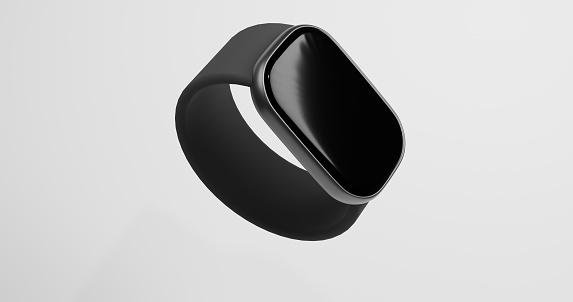Do you have a smart watch? If it does, you’ve probably observed a daily step goal that came with it from the factory: 10 thousand steps. There are pedometers in many brands and models of not only smart watches but also smart phones. A device that counts our steps thanks to the accelerometers inside.
According to the American College of Sports Medicine, these accessories are part of wearable technology (worn on the body), which has been the world’s #1 fitness trend for years.
Understand the source of the 10,000 steps per day goal
In 1965, a device called “Manpo-kei” was released by the Japanese company Yamasa Clock, this name means “10 thousand meters step counter”. From this, some research has reinforced the belief that one should walk 10,000 steps a day, with some health benefits. Also, the 10,000 mark is easily remembered. But is this number necessary? What does science tell us?
Do we need 10,000 steps a day for health?
The truth is that 10,000 steps goal has more to do with marketing more than scientific data, so don’t be disappointed if you don’t reach the predicted goal.
Start by understanding in practice: The average number of steps stated in the literature is 100 steps per minute. Take a test: Walk for 1 minute and count your steps. Count manually and compare with your devices: if you have a mobile phone or a watch. Three thousand steps in 30 minutes is a recommended target worldwide and corresponds to physical activity recommendations for health (150 minutes of moderate physical activity per week).
In this account, 1 hour of walking would equal 6,000 steps, and some devices have even updated the target for this number. The original goal of 10,000 steps (about 8 km) could mean walking more than an hour and a half a day, which may not be possible for many people.
For research purposes, a classification has been created for people based on the number of steps:
- sedentary: less than 5,000 steps per day;
- Low activity level: 5 to 7,500 steps;
- Very little active: 7.5 to 10 thousand steps;
- Active: 10 to 12 thousand steps;
- Extremely Active: Over 12,000 steps.
Our intuition suggests that the more steps the better, right? The most current science shows that this may not be exactly the case. The necessity of taking 10,000 steps a day for health is a myth.

Harvard Medical School research has shown that taking about 4,400 steps a day can significantly reduce the risk of death. The death rate for women who took 4,400 steps was lower than for women who took 2,700 steps. With more steps, the death rate decreased in people who walked up to 7,500 steps. But taking further steps has yet to yield additional benefits.
Another study confirmed that 10,000 steps a day is not a requirement for living longer. People who walked about 8,000 steps a day were half as likely to die prematurely from heart disease or another cause than those who walked 4,000 steps a day. The statistical benefits of additional steps were small, meaning that taking more daily steps up to and after the 10,000 step mark didn’t hurt people.
“Every move counts” It is the most up-to-date slogan of the World Health Organization, given the epidemic of physical inactivity the world is going through. Walking is perhaps the simplest form of physical activity and exercise. Actually, It is important that you increase the number of steps one day you can, but what can you do Giving you more physical benefits, such as pleasure and increased strength, is physical exercise. – bodybuilding sessions, CrossFit, running, Pilates, Yoga, fitness or others. Orientation is when you try to increase your physical activity during the day, move as much as you can, but know that there can be greater benefits from regular training. It is important for do something you loveBecause Continuity is more important than intensityand it will bring you results.
Source: Tec Mundo
I’m Blaine Morgan, an experienced journalist and writer with over 8 years of experience in the tech industry. My expertise lies in writing about technology news and trends, covering everything from cutting-edge gadgets to emerging software developments. I’ve written for several leading publications including Gadget Onus where I am an author.













